Xue-wen Chen
An Adaptive Cluster-based Filtering Framework for Speckle Reduction of OCT Skin Images
Jul 02, 2018
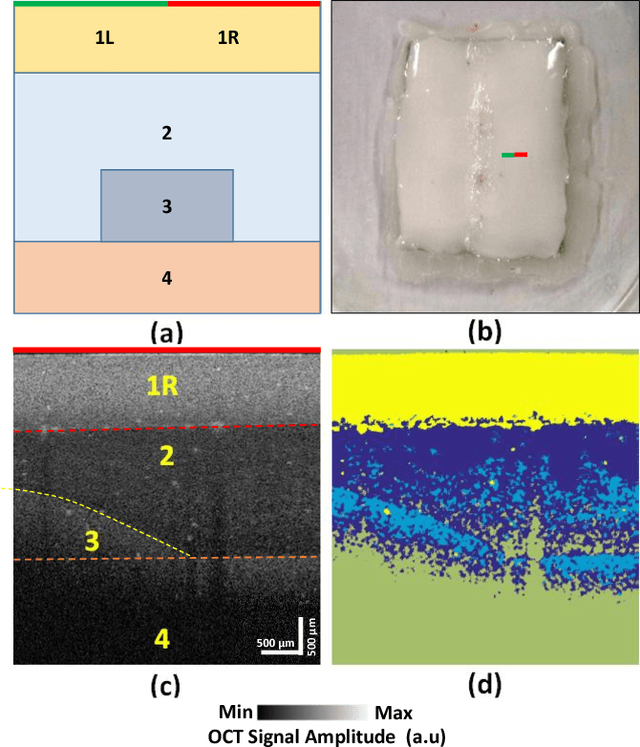

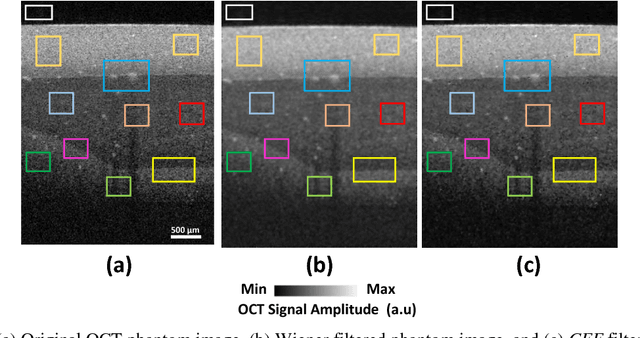
Abstract:Optical coherence tomography (OCT) has become a favorable device in the Dermatology discipline due to its moderate resolution and penetration depth. OCT images however contain a grainy pattern, called speckle, due to the use of a broadband source in the configuration of OCT. So far, a variety of filtering (de-speckling) techniques is introduced to reduce speckle in OCT images. Most of these methods are generic and can be applied to OCT images of different tissues. The ambition of this work is to provide a de-speckling framework specialized for filtering skin tissues for the community to utilize, adapt or build upon. In this paper, we present an adaptive cluster-based filtering framework, optimized for speckle reduction of OCT skin images. In this framework, by considering the layered structure of skin, first the OCT skin images are segmented into differentiable layers utilizing clustering algorithms, and then each cluster is de-speckled individually using adaptive filtering techniques. In this study, hierarchical clustering algorithm and adaptive Wiener filtering technique are utilized to develop the framework. The proposed method is tested on optical solid phantoms with predetermined optical properties. The method is also tested on healthy human skin images. The results show that the proposed cluster-based filtering method can effectively reduce the speckle and increase the signal-to-noise ratio and contrast while preserving the edges in the image. The proposed cluster-based filtering framework enables researchers to develop unsupervised learning solutions for de-speckling OCT skin images using adaptive filtering methods, or extend the framework to new applications.
Long-term face tracking in the wild using deep learning
May 19, 2018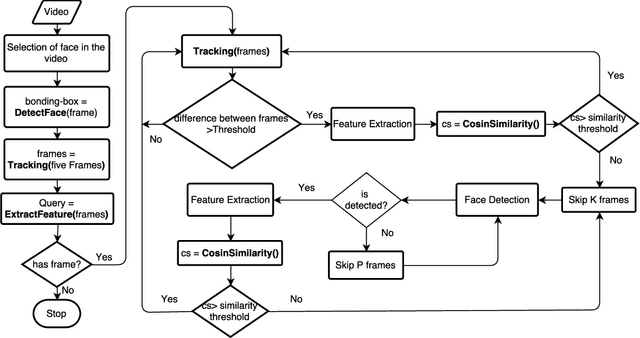
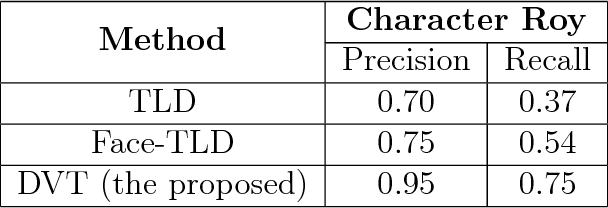

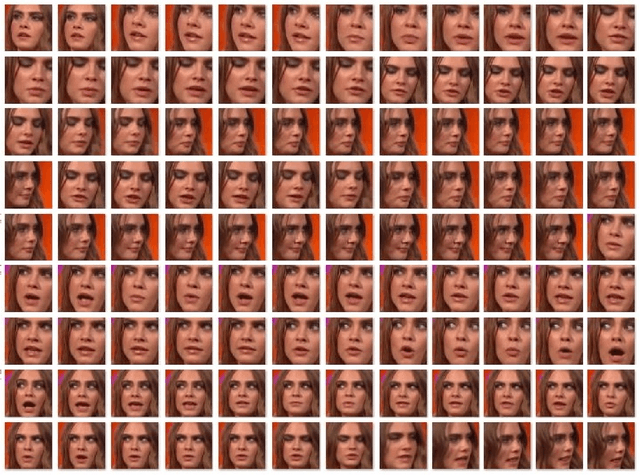
Abstract:This paper investigates long-term face tracking of a specific person given his/her face image in a single frame as a query in a video stream. Through taking advantage of pre-trained deep learning models on big data, a novel system is developed for accurate video face tracking in the unconstrained environments depicting various people and objects moving in and out of the frame. In the proposed system, we present a detection-verification-tracking method (dubbed as 'DVT') which accomplishes the long-term face tracking task through the collaboration of face detection, face verification, and (short-term) face tracking. An offline trained detector based on cascaded convolutional neural networks localizes all faces appeared in the frames, and an offline trained face verifier based on deep convolutional neural networks and similarity metric learning decides if any face or which face corresponds to the queried person. An online trained tracker follows the face from frame to frame. When validated on a sitcom episode and a TV show, the DVT method outperforms tracking-learning-detection (TLD) and face-TLD in terms of recall and precision. The proposed system is also tested on many other types of videos and shows very promising results.
 Add to Chrome
Add to Chrome Add to Firefox
Add to Firefox Add to Edge
Add to Edge